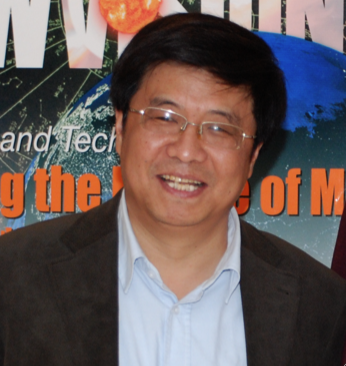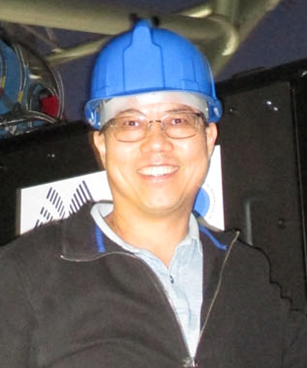| 展会日期 | 2019-07-07 至 2019-07-07  |
| 展出城市 | 北京 |
| 展出地址 | 北京市朝阳区天辰东路7号北京国家会议中心 |
| 展馆名称 | 北京国家会议中心401会议室 |
| 主办单位 |
| 展会日期 | 2019-07-07 至 2019-07-07  |
| 展出城市 | 北京 |
| 展出地址 | 北京市朝阳区天辰东路7号北京国家会议中心 |
| 展馆名称 | 北京国家会议中心401会议室 |
| 主办单位 |
本次邀请到亚利桑那大学John E. Greivenkamp教授和佛罗里达大学Jian Ge教授带大家回顾望远镜、双筒望远镜的发展历程和天基望远镜的重要作用。活动免费,让我们一起探索星辰大海!
一、主办单位:
中国光学工程学会
中科院国家天文台
二、时间:
2019年7月7日 14:00-17:00
三、地点:
北京国家会议中心401会议室
四、课程语言:
英文
五、日程:
|
Afternoon 7 July |
|
|
Chairman: Suijian Xue(National Astronomical Observatories, CAS) |
|
|
13:30-14:00 |
Sign in |
|
14:00-15:30 |
The History of Telescopes and Binoculars, John E. Greivenkamp(College of Optical Sciences, University of Arizona) and Q&A |
|
15:30-17:00 |
Space Transit Planet Detection, Jian Ge(Department of Astronomy, University of Florida) and Q&A |
六、主席:

Suijian Xue(National Astronomical Observatories, CAS)
Biography:
From 2002 to 2013, Suijian Xue is a researcher and the Associate Director-General of NAOC responsible for the Basic Research and International Cooperations. He is the Vice Director-General of NAOC since 2013.
Suijian has been actively engaged in both bilateral and multi-lateral cooperation activities between China and a wide range of international communities in astronomy. He is a Board Member representing a Chinese consortium of institutes in the Thirty-Meter-Telescope International Observatory, LLC and the Project Manager of TMT-China team. Xue’s research interests focus on X-ray & multi-wavelength observations and studies on active galaxies and clusters of galaxies. He has more than 40 refereed publications, and was, in 2002, awarded the 1st Natural Science Prize of Tianjing Municipality for his research on “Multi-wavelength observation and study on galaxy interaction and merging process and the influence to the galaxy formation and evolution”.
七、讲师:

The History of Telescopes and Binoculars
John E. Greivenkamp
(College of Optical Sciences, University of Arizona)
Biography:
John E. Greivenkamp is a Professor at the James C. Wyant College of Optical Sciences of the University of Arizona where he has taught courses in optical engineering since 1991. He received is BS in Physics and Math from Thomas More College in 1976. After receiving a Ph.D. from the Optical Sciences Center in 1980, he was employed by Eastman Kodak. He is a fellow of SPIE-the International Society for Optics and Photonics and of OSA. He serves as the editor for the SPIE Field Guides Series and is the author of Field Guide to Geometrical Optics. He is the founder and curator of the Museum of Optics at the College of Optical Sciences. Professor Greivenkamp was honored with the 2017 SPIE Educator Award and he serves as the 2019 SPIE President-Elect.
Abstract:
The design of the refracting telescope advanced rapidly following its invention in 1608, reaching its modern configuration in about a century. Even though the development of binoculars began almost simultaneously, nearly three hundred years elapsed before practical prismatic binoculars became available. The impediments to practical binoculars were not only in optical design, but in mechanical design, manufacturing, and materials. This talk will document the evolution of telescopes and binoculars using examples from the collection of antique optics at the College of Optical Sciences at the University of Arizona.

Space Transit Planet Detection
Jian Ge
(Department of Astronomy, University of Florida)
Biography:
Dr. Jian Ge is a professor of astronomy at University of Florida (2004-present). He was an assistant professor at Pennsylvania State University in 2000-2004, and a postdoc research staff at Lawrence Livermore National Lab in 1998-2000. He got his Ph.D in Astronomy at the University of Arizona in 1998 and his BSc at University of Science and Technology of China in 1989.
He is the Principal Investigator of the Dharma Planet Survey and a collaborator of the NASA TESS mission. He was the PI for the MARVELS survey of the SDSS-III program in 2008-2014, the PI for the TOU, EXPERT, LiJET, and W.M. Keck Exoplanet Tracker optical Doppler instruments and also FIRST near IR Doppler instrument. He led the development of dispersed fixed-delay interferometry for both single and multiple object Doppler spectroscopy and the first silicon grisms and large format silicon immersion gratings. He also led the development of the advanced image slicer integral field optics, and new generation coronagraphic image and pupil masks for NASA Terrestrial Planet Finder (TPF). His team discovered five new planets (including the planet Vulcan orbiting 40 Eridani), confirmed three transiting planes, 24 brown dwarfs, over 400 new binaries and over 10 low-mass planet candidates, about 700 high redshift quasar 2175 Å dust absorbers, a new population of quasar absorber, and molecular hydrogen in four high-redshift damped Lyman alpha quasar absorbers, and measured high redshift Cosmic Microwave Background Radiation temperatures. He has published over 300 refereed journal and technical papers, and abstracts. He was the first Chinese scientist who discovered exoplanets, one of 40 Chinese Students in the 40-year study aboard, an advisory member of China Thirty Meter Telescope, an oversea review panel member of Chinese Academy of Science, and an associate editor for Science China.
Abstract:Since the dawn of civilization, humans have been searching for answers to the most fundamental questions, such as "Where did we come from?" and "Are we alone?" For the first time in history our species is now close to answering these questions. Space-based telescopes (such as Kepler, TESS, Spitzer, CoRoT, and HST) have made important contributions by detecting thousands of close-in small planets via high precision transit photometry. These discoveries have greatly improved our understanding of the distributions of orbit, size, and multiplicity of these small exoplanets, and also made a major impact in studying frequencies of exoplanet populations, including the occurrence of rocky habitable planets orbiting solar type stars. I will summarize these telescope design, performance, main science results, and future space mission plans.